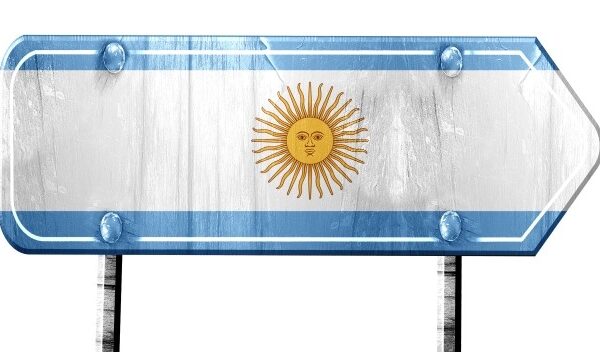
Putting a NeuGroup member question about fed funds credit lines in a broader context for banks and their clients.
Corporations have been spending significantly more time and effort monitoring and mitigating bank counterparty credit risk since the collapse of Silicon Valley Bank in 2023. NeuGroup member companies have taken a variety of steps, with some limiting or eliminating their exposure to institutions other than large, global systemically important banks. At the same time, “banks, especially regional banks, are being pushed to reevaluate their funding mix by both regulators and investors,” noted Jerry Olivo, a former banker who leads NeuGroup for Regional Bank Treasurers.
- The question below from a member of the group about federal funds credit lines provided to banks by correspondent banks should be considered within that broader context and “the bigger story of banks revamping their contingency funding plans to diversify sources and increase the value of borrowings during times of liquidity stress,” Mr. Olivo said.
- “The issue that banks and corporations care about is how changes in bank funding and the liquidity requirements mix will impact the cost of banking services, availability of credit, and the safety of uninsured deposits.”
Banking basics. “Banks need to have tested plans for scenarios when they need to borrow funds during a period of market and/or bank-specific liquidity shortfalls,” Mr. Olivo said. “They need multiple sources of committed funding or larger liquidity buffers during these times.”
- Correspondent banks, meanwhile, lend short-term (usually overnight) funds to other banks, known as fed funds. But these lines of credit are usually uncommitted, “meaning they can be rescinded at any time by the other bank,” he said. “So they could decline to lend at precisely the time that the requesting bank needs the funds.”
The following discussion among bank treasurers on NeuGroup’s members-only, online community platform highlights their heightened focus on locking in reliable sources of liquidity during periods of stress. The resulting increase in their resiliency raises the likelihood that banks can continue providing services during periods of market stress while minimizing counterparty risks to their clients, Mr. Olivo said.
Member question: “What is the appropriate amount of fed funds lines—and across how many correspondents? We are going through a process of trying to optimize (cut down) our correspondent bank partners. Like many of you, we have grown over $10 billion in a relatively short period of time.
- “Through that, our correspondent bank partners and the fed funds lines provided by them have been cobbled together over time. I was wondering how the rest of you thought about a desired amount of contingent liquidity specifically from fed funds lines?
- “Also, if you are setting a total dollar amount that you want to have access to in fed funds lines, is there a number of correspondents you want that available from for diversification purposes?”
Peer answer 1: “From a contingency funding/stress testing scenario, we assume $0 for fed funds availability. All of our lines are uncommitted and we don’t pay a fee for the line. So, if you want to sell us money, we’ll put you on the list.”
Peer answer 2: “Our correspondent fed funds lines are also uncommitted, subject to availability, and almost guaranteed to not be available when we may want to use them. We don’t have a mix target of fed funds lines vs. available funding sources. We only have them with primary correspondents. And l also assume they are not available in stress testing.”
Peer answer 3: “Same on our end as far as being uncommitted, and we assume they’d be unavailable in stress scenarios. We have about a half-dozen lines right now. But as we get larger, we are thinking about how to prune them back, depending upon the rest of our relationship with the correspondents themselves.”
Peer answer 4: “Same regarding giving no credit to the fed funds lines. We keep them because they are free, but actually don’t care about them anymore in stress or in real life.
- “We decided to test all our liquidity lines with a full-draw request on the Monday after the SVB collapse. One funded 100% in minutes. One delayed until the end of the day and I had to put pressure on them and they delivered 25% of our request. One said they would only give us $25,000, no joke. One said they had canceled our line months ago but forgot to tell us.”
More input. During a session for bank treasury team members led by Mr. Olivo this week, only one participant said their bank includes fed funds credit lines in its contingency plan. A couple of peers said access to fed funds is part of their banks’ funding diversification efforts but not a significant funding source.
Analysis. The peer answers are consistent with a widespread move away from fed funds borrowing by banks in the wake of the global financial crisis. A blog analysis by the Federal Reserve Bank of New York last year says daily trading volume in fed funds “dropped from around $150 billion to $175 billion, or around 2% of commercial bank assets, prior to 2008 to around $60 billion to $80 billion per day in the 2010s, increasing to an average of $110 billion, or 0.5% of bank assets, per day in 2023.”
- One reason cited: In the fall of 2008, Congress gave the Fed the authority to pay depository institutions interest on their excess reserve balances. Prior to that, Mr. Olivo said, any balance in excess of deposit reserve requirements did not earn interest so it was more common to lend excess overnight cash to other banks.
- “Although deposit reserve requirements have since been eliminated, banks continue to earn competitive rates on balances held at the Fed so they prefer to leave liquidity buffers there or in other high-quality liquid assets.”
- This matters to bank clients, regulators and the financial system to the extent that institutions that place excess funds at the Fed or in high-quality liquid assets represent lower risks than banks lending to other banks—without a material sacrifice of return.
Bonus question. One of the peers asked a related question: “Do you take your fed funds providers through your vendor management (VM) process?” He received three answers:
- “We do have them as part of a third-party risk management process. And we do a high-level correspondent review quarterly as well.”
- “Not for all fed funds providers, only the high-level quarterly correspondent review. Yes for those who we are using for correspondent services beyond the fed funds line.”
- “We carved out our correspondent banks and broker-dealers from the VM process and include the diligence and monitoring requirements for them into a policy owned by treasury, the investment policy, for lack of a better place. I can see potential for criticism from regulators given the focus on VM.”


